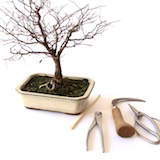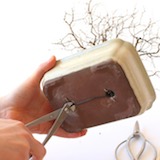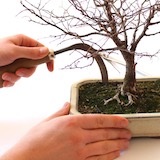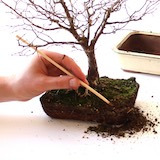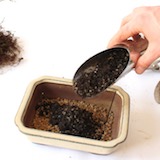How often should I repot a Bonsai?
How often you should repot depends on the size of the pot and tree species of your Bonsai. Fast-growing trees need to be repotted every two years, sometimes sooner. Older, more mature trees need to be repotted every three to five years. Repotting is not something that should be routine. Check your Bonsai early in the spring by carefully removing the tree from its pot. If you see the roots circling around the root system, your Bonsai needs to be repotted. If the roots are still contained within soil, leave it and check again the following spring.
Many indoor Bonsai are planted in organic soil that retains too much water, which can lead to root rot and other issues. If you buy a tree like this make sure to repot it using proper Bonsai substrate in the next early spring or fall.

When to repot?
The best time to repot a Bonsai is early in the spring, while trees are still dormant, and the buds begin to swell. At this stage trees are not sustaining full-grown foliage, so the damaging effect of repotting will be minimized. Repotting in early spring will also ensure that damage done to the root system will be quickly repaired, as soon as the tree starts growing. Some tree species can also be repotted in fall, but never repot a Bonsai in summer or winter.
Bonsai soil mixture
Choosing the proper soil mixture is crucial for the health of your trees. It should allow water to drain enough to prevent the roots from rotting, while also absorbing enough water to hydrate the tree. Some tree species need special soil mixtures, but the following mixture is suitable for most trees: Akadama, pumice, and lava rock in a ratio of 1:1:1.
“Choosing the right soil mixture is crucial for the health of your trees.”
If you know you won't have time to water your trees regularly, add more Akadama for a more water-absorbing mixture. If your tree is in a more humid climate, add more lava rock for a mixture that permits more draining. For detailed information on soil-mixtures refer to the Bonsai soil article.

The right pot for your Bonsai
Choosing a pot that fits the size of your Bonsai and the style you aim to achieve is crucial for the composition. Color, shape, size, design all come into play when choosing a pot. For more information, check the Pot selection article.



